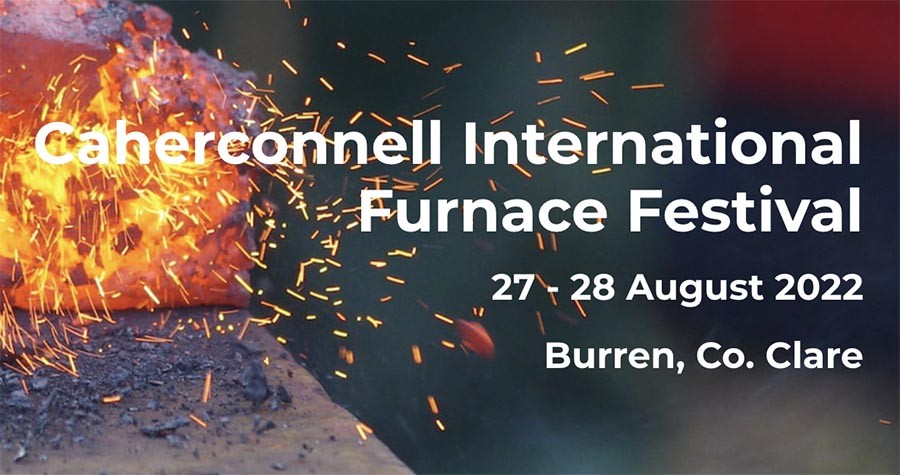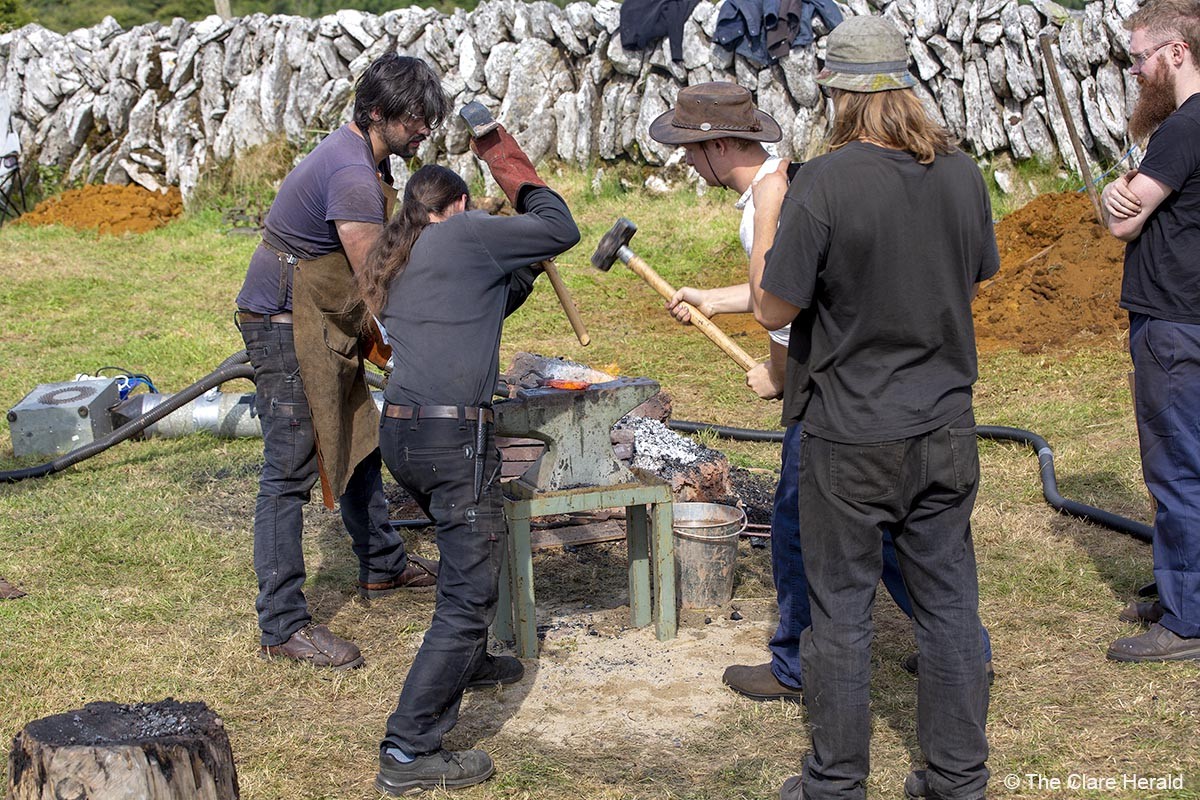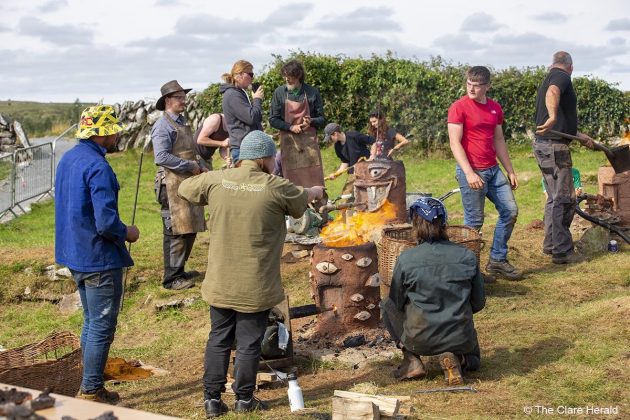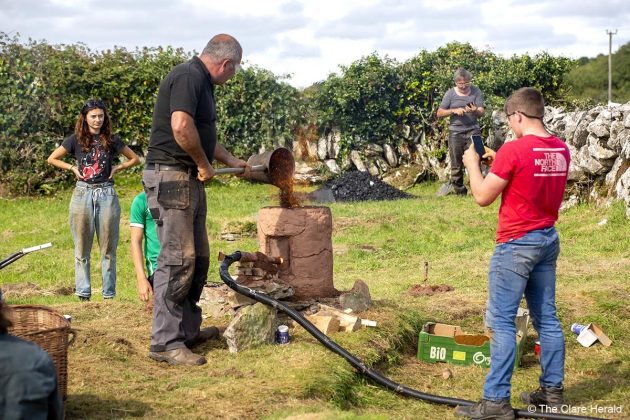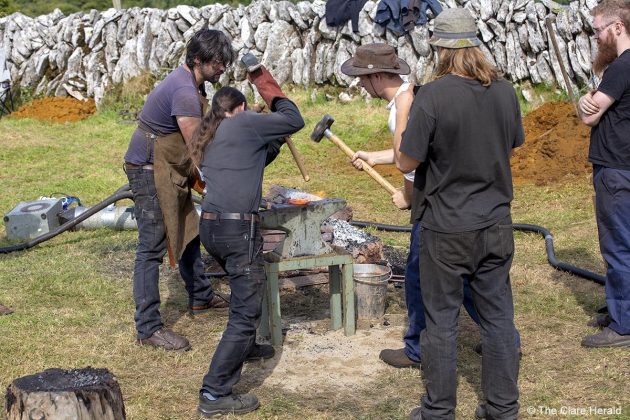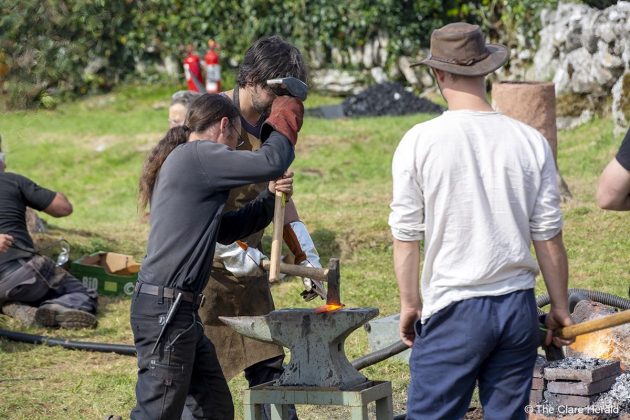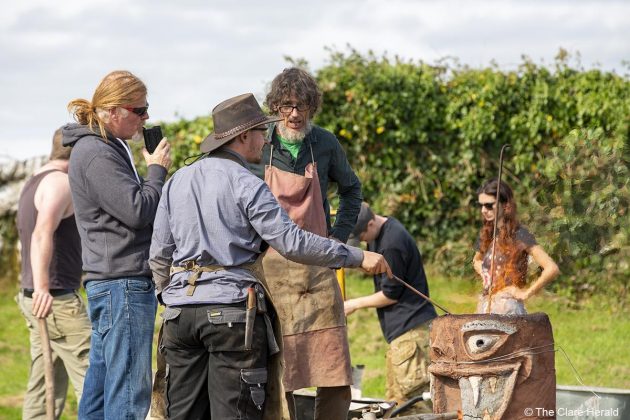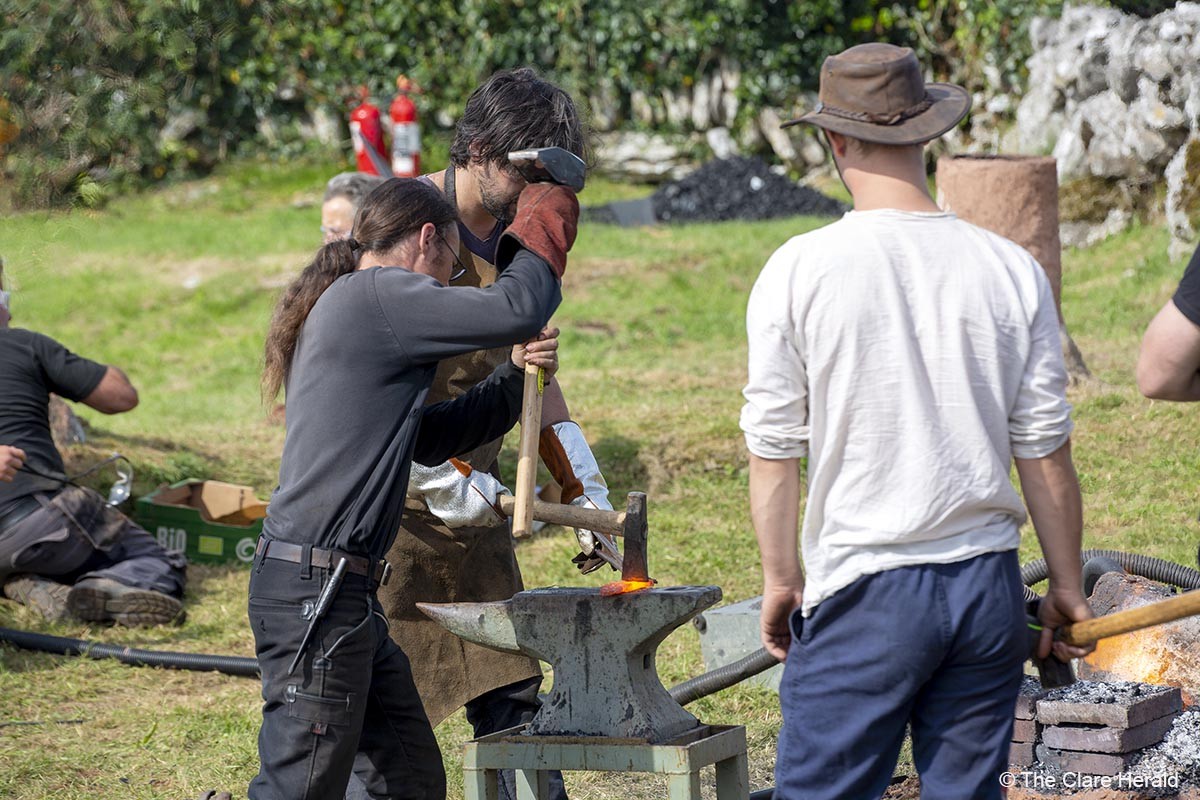
A showcase of medieval iron smelting and forging got underway this morning Caherconnell Stone Fort in the heart of the Burren in County Clare.
More than 50 blacksmiths and traditional iron smelters from across Ireland, the UK, Europe and the USA will participate in the inaugural Caherconnell International Furnace Festival.
The family fun weekend will see the 1,000-year-old fort, once home to Gaelic Chieftains, being transformed into an open-air museum as iron is smelted on site before being forged into replicas of arrowheads, knives and belt buckles excavated at the medieval site. Experts will provide a running commentary throughout the event.
The iron ore being used at the festival was recently collected on Slieve Elva in the Burren and in the cutaway bogs in County Offaly where it has produced an unusual orange landscape.
Funded by The Heritage Council, Geological Survey of Ireland (GSI), Fáilte Ireland and Clare County Council, and supported by the Burren & Cliffs of Moher UNESCO Global Geopark, the upcoming festival is organised by the Irish Iron Heritage Foundation.
Foundation member and Irish Smelting Archaeologist Dr Paul Rondelez said the event will demonstrate the vital role played by iron in Late Medieval Ireland from everyday implements and tools to warfare and building.
“Archaeologists from NUI Galway excavating the interior of Caherconnell Stone Fort recently uncovered evidence of iron smelting dating back more than 1,000 years, which makes it a perfect host location for this event,” explained Dr. Rondelez. “In 1580 a Spanish writer wrote ‘The inhabitants of Ireland call it Erin, which means land of iron, because it is made there.’ The etymology is incorrect, but it is a nice clue to the metal still being smelted locally.”
“An important part of the Caherconnell International Furnace Festival is our open-air museum where we tell the story of iron in Ireland,” Dr. Rondelez added. “The iron being produced at the festival is known as bloomery iron, of which every iron and steel object produced in Ireland between 500 BC and 1500 AD was made. The iron was used in every sword, arrowhead and battle axe in the many wars fought during that period, and also was used in the tools used to farm land, build castles, churches, bridges, ships and houses, and to cut the ancient forests.”
“By far the most spectacular part of the festival is the ‘Birth of Iron’,” stated Dr Eamon Doyle, Member of the Irish Iron Heritage Foundation and Geologist with the Burren & Cliffs of Moher UNESCO Global Geopark. “The only materials used to make our Irish iron are iron ore and charcoal. In the skilled hands of the smelters and the intense heat of the clay furnaces, these two raw materials are transformed into a lump of very dense, red hot iron metal which is then pulled out of the furnaces. After the birth, the iron needs to be folded (kneaded like dough) after which blacksmiths can forge it into practical objects. This Birth of Iron will happen every hour or so over the on Saturday and several times on Sunday.”
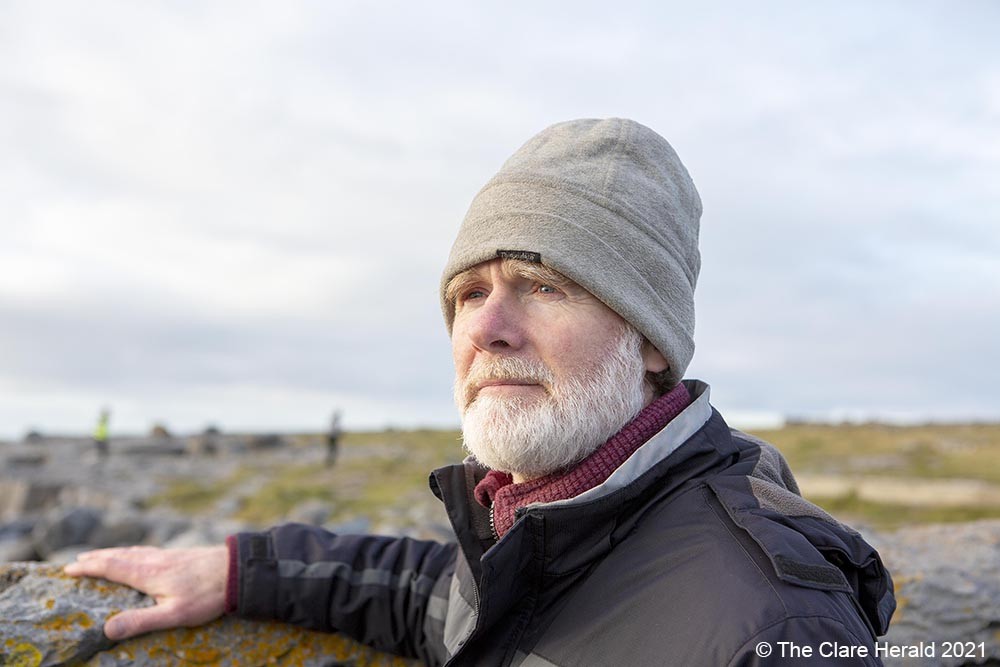
Dr. Doyle explained that forges have existed in Ireland since at least the time of St Patrick and were the places where all the iron objects from knives and nails to spades and much more were made.
“The replacement of wrought iron by mild steel and a general change in the global economy during the 20th century led to significant changes in Irish blacksmithing,” Dr. Doyle added. “To this day however, blacksmiths still work in Ireland, from the farriers looking after the horse stock in the country to those hand-forging gates. You can meet many of these skilled Irish blacksmiths at the Caherconnell International Furnace Festival.”
To find out more about the history of iron in Ireland, you can visit the open-air museum at Caherconnell Stone Fort or join the free guided tours at the Caherconnell International Furnace Festival. See www.furnacefestival.ie.
